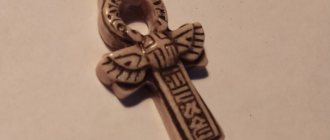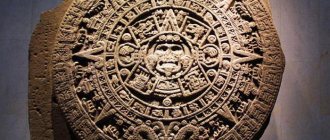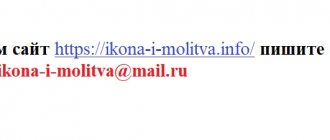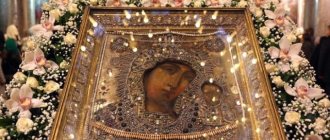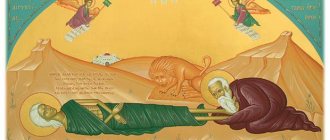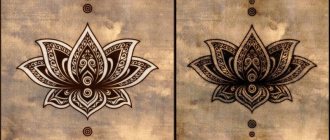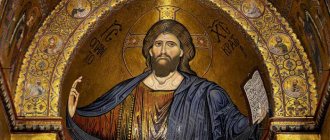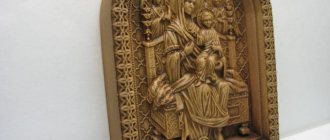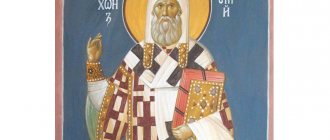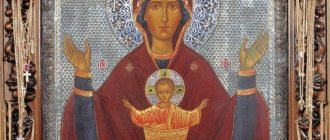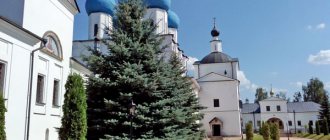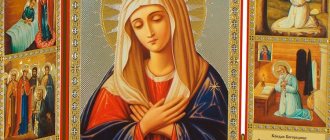Updated: 06/14/2020
An icon in art history is an object of easel painting, an artistic depiction of persons or events on a biblical (church) theme. From a theological point of view, an icon is a sacred object of veneration for believers, an image painted in strict accordance with strict canons. Outstanding examples of icon painting are of great interest to collectors and are worth a lot of money.
Icons are ubiquitous in Christian culture; they are used in Orthodoxy and Catholicism during rituals and sacraments. Contrary to popular misconception, icons are not objects of worship (idols) for true believers. A person prays not to an artistic image, but in front of it, this is how he turns to God or the Saint for help.
Classification and types of icons
Icons in Christianity, despite the strictness of the canons of their writing, can be very different from each other. In fine arts, there are the following criteria for classifying icons:
- Based on the plot (depicting Christ, the Holy Trinity, the Mother of God, angels, the Holy Spirit, martyrs, apostles, events from the Bible).
- According to the technique of execution (painting, carved on wood or metal, embroidered on fabric, mosaic, embossed, fresco).
- By location (temple, house, road, remote).
- By the number of compositions (one-, two- and multi-frequency, branded).
- According to the style of writing or the school of a particular icon painter (Byzantine, Greek, Russian, Dionysius’ workshop, Andrei Rublev’s school).
- By purpose (family, wedding, votive, measured, personal).
- By size (small, medium, large).
- According to the coverage of the figures (full-length, throne, waist, shoulder, main).
In Christianity, it is also customary to divide especially revered - miraculous icons according to the manifestations of their power into the following varieties:
- Myrrh-streaming (releasing fragrant oily moisture).
- Miraculously found (found by chance in the most amazing places).
- Healing (having the ability to restore health to people).
Features of iconographic images
An icon is a visual image or image of Jesus Christ, the Mother of God, a Christian saint or angel. Often icons contain images of biblical and evangelical events or biographies of saints. The icon is not necessarily tasked with conveying a detailed and most accurate image, although this is important. The essence of icons is different. They are religious objects in front of which Christians pray. Even in ancient times, a very precise and amazing expression of this experience was formulated: looking at an image (image), one must mentally turn to the prototype, that is, to the one whose face is depicted on the icon. An icon is, first of all, an assistant in prayer. No one in Christianity has ever addressed prayer to the icon itself, to the image.
From what has been said, several important features of icons follow. The first is that the icon is historical. You can only portray those who really existed, those who were seen. You can depict what actually happened, what was visible. For example, in practice, Christians believe in the Trinity, but this feature is expressed in the negative attitude of Orthodox theology towards images of God the Father, who is sometimes represented as an old man holding the youth Jesus on his knees. In addition, the icon does not accept images of various kinds of fantasies. Prayer and religious life in general are extremely serious and responsible. You cannot pray to someone who did not exist, or learn morally from something that did not happen. Christianity is historical and is not compatible with myths and fiction.
The second feature is the inscription indicating who is depicted. If a Christian prays in front of an icon, then the prayer cannot be addressed to an unknown person; prayer is always a specific personal appeal. It is very important to know who the icon painter depicted. The fact is that photographic images have appeared recently and we can judge many saints, and even the Lord Jesus Christ, primarily from eyewitness accounts (sometimes graphic, sometimes written), which are completely subjective. In addition, many people are similar to each other. When approaching the icon and starting prayer, a Christian must know exactly whose face he is looking at.
The third feature is that on the icons they try to testify to the holiness of those depicted through pictorial means. Even in ancient times, an excellent method was found. They try to express in colors what is associated with holiness: light, purity, radiance, beauty, the absence of distortions and flaws, damage. Everyone knows halos - this is nothing more than an attempt to depict the radiance of the glory of God flowing through the saints. On icons they try to depict a person as he appears before God, without any injuries or shortcomings. In plot icons, the images are more realistic, but their task is somewhat different - to remind Christians about specific events and help them think about them.
Everything else: styles, techniques, compliance with ancient models, although important, cannot be decisive in our time. Life itself here has eliminated all sorts of claims to truth by anyone. I personally am much closer to the classical icons of the Byzantine or Old Russian style, but at the same time, many people like “artistic” images.
Differences between Catholic and Orthodox icons
There are serious differences in dogma, rituals and spiritual life between the Catholic and Orthodox churches. Historically, there has also been a division in the art of icon painting.
In Catholic culture, since the Renaissance, there has been a refusal to follow religious norms when painting icons. Renaissance painters began to create very colorful and artistically bold paintings instead of the generally accepted strict faces of saints and scenes on biblical themes. Gradually, in Western Europe, painting on religious themes replaced ancient icon painting. The Catholic Church accepted these changes. Paintings by masters became objects of decoration for many churches, cathedrals, and monasteries.
Orthodox icon painters, on the contrary, strictly observed the ancient canons. Therefore, their creations can be easily distinguished from the works of their Western “colleagues” by the following characteristics:
- Conventions and symbolism of the image. Russian icon painters deliberately depicted figures as ethereal, with slightly elongated proportions, in order to enhance the role of the spiritual and reduce the importance of the physical principle.
- The reign of reverse perspective. Image objects on icons increase in size as they move away from the observer.
- The role of light in composition. Orthodox artists did not use the play of chiaroscuro when painting images of saints; the light came from the faces themselves.
- Color palette. The color of the robes, symbols and other items on the icon exactly corresponded to certain canons.
- Lack of time frames. Icons cannot be tied to a specific era; they were painted outside of a specific time period.
LiveInternetLiveInternet
Wednesday, March 04, 2015 11:30 + to quote book Orthodox icons
The icon is a completely unique phenomenon in medieval culture.
There are hundreds of them in churches, try to figure out which one you need. This is where questions arise: which icons should we pray to? Who should I pray to? Which saint? Let's try to figure out which icon is for what. Kazanskaya.
[/td]
| Vladimirskaya | Desperate one hope | Pochaevskaya |
VIRGIN OF KAZAN
- the most revered icon in Rus', for several centuries she has been revered as the Patroness and Intercessor of the Russian land and the Russian people.
All the main events in life take place with her, starting with baptism. The icon gives a blessing for marriage, and it is also an assistant in work. They bless young people getting married with it, ask the icon for family well-being and happiness, and also hang the icon near children's cribs. An icon that stops fire and helps those with vision problems. The image of the Kazan Icon of the Mother of God helps in various troubles, misfortunes, and illnesses. THE MOTHER OF GOD OF VLADIMIR
is one of the most revered, since it was used to crown kings and elect high priests.
Before her they pray for the softening of evil hearts, the healing of infirmity, the humility of those at war, the healing of the possessed. She especially protects mothers and their children, gives pregnant women easy childbirth and healthy babies, relieves infertility and diseases of the reproductive organs. The image of a mother as an intercessor in all troubles and sorrows. Icon of the Most Holy Theotokos of the DESPERATE ONE HOPE
-Despite the fact that this icon is little known, one of the believers (and this is not prohibited by the church) composed an akathist for it.
They pray before the icon in various sorrows and when a person is despondent. Those whose faith has weakened ask the Mother of God to return to their former state of mind and bestow spiritual vigor. They pray to the icon for deliverance from enemies, for the admonition of quarreling people (especially neighbors), for the eradication of envy. She is an assistant in the treatment of modern diseases - alcoholism, smoking, gaming and computer addiction.. VIRGIN OF POCHAYEV
- The Pochaev Icon of the Mother of God is one of the most revered shrines of the Russian Church. When turning to the Mother of God "Pochaevskaya" they pray for protection from internecine enmity, from enemy invasion, for healing from blindness, both physical and spiritual, for liberation from captivity, they pray for the granting of health and miracles of help in need.
| Quick to Hear | Iverskaya | Everlasting color | Recovery of the dead |
QUICK TO HEAR
— they pray, when quick and urgent help is needed, for the healing of mental and physical ailments, including paralysis, blindness, cancer, and also ask for the birth of healthy children and the release of prisoners.
Iverskaya MOTHER OF GOD
- Guardian of the hearth.
She is considered the patroness of all women, their helper and intercessor before the Lord. An icon used to remove the “crown of celibacy” from both men and women. In front of the icon they also pray for the healing of physical and mental illnesses, for consolation in illness. UNFADING COLOR
-When turning to the icon of the Mother of God “Fading Color”, they pray for the preservation of a righteous life and the resolution of family troubles.
Prayers to this icon help not to make a mistake in choosing a spouse. The flower in the hands of the Mother of God affirms the purity of the Mother of God and symbolizes the unfading of virginity. Icon of the Mother of God SEEKING THE LORD
- seriously ill people and their relatives make requests. It helps to get rid of vices and alcohol addiction. Repentant sinners who have turned away from God go to these icons. Women ask for a happy marriage and healthy children, helps with eye diseases, fever, headaches. You can address the Blessed Mother with simple, sincere words that come from the heart.
| Soothe my sorrows | Merciful | Feodorovskaya | Jerusalem |
Icon of the Mother of God QUEEN MY SORROWS
- they pray for deliverance from various illnesses, both physical and mental..
The Icon of the Most Holy Theotokos merciful
- or “It is worthy to eat”, they pray for mental and physical illnesses, at the end of any business, during epidemics, for happiness in marriage, in accidents.
The Feodorovskaya icon of the Mother of God
has long been revered by believers not only as miraculous, but also as especially protective of family well-being, the birth and upbringing of children, and helping in difficult childbirths
. Tradition connects her with the calling of the founder of the dynasty, Tsar Mikhail Fedorovich, to the kingdom in 1613. Kept in the Epiphany Cathedral in the city of Kostroma. JERUSALEM Icon of the Mother of God
- they pray in grief, sadness and despondency, for healing from blindness, eye diseases and paralysis, during a cholera epidemic, for deliverance from the death of livestock, from fire, during relaxation, as well as during an attack by enemies..
| Tikhvinskaya | Pochaevskaya | Kozelshanskaya | Three-handed |
TIKHVINSKAYA
— The icon is considered a child’s icon; it is also called a “guidebook.”
She helps children in illness, calms the restless and disobedient, helps them choose friends, and protects them from the bad influence of the street. It is believed that it strengthens the bond between parents and children, that is, children do not abandon their parents in old age. Helps women during childbirth and pregnancy.. Mother of God of POCHAEV
- they pray for protection from civil strife, from enemy invasion, for healing from blindness, both physical and spiritual, for liberation from captivity., they pray for the granting of health and miracles of help in need. .
KOZELSHANSKAYA
Icon of the Mother of God - they pray for the healing of orthopedic diseases, especially helping girls who came to her with a prayer to arrange family happiness.
THREE-HANDED MAN
- in front of the miraculous image of the Mother of God they pray for healing from pain in the arms and legs or their injuries, from fire, as well as from illness, grief and sadness. .
| Look to humility | blessed sky |
Icon of the Mother of God LOOK AT HUMILITY
— they pray to the Most Holy Theotokos for the granting of humility and repentance both for themselves and for sinners who do not want to repent, for easing the afterlife fate of the deceased, for protection from false and evil teachings.
Prayers before the icon also help in solving housing issues. Icon of the Mother of God GRACEFUL SKY
- helps women get married, find happiness in marriage and motherhood.
They pray to the icon for deliverance from drunkenness and other addictions. If you have a cherished wish, pray in front of the “Blessed Heaven” icon, and it will come true. It is believed that the icon provides patronage to paratroopers (Airborne Forces) and helps them in their service. Icon of the Mother of God SOFTENING EVIL HEARTS
- in front of the icon they ask for a family truce or that there is no hostility between neighbors, as well as for peace between entire states .
In our culture, the image of the Mother of God, whose chest is pierced by arrows, is one of the most emotional and expressive in icon painting. It makes it possible to feel mercy and compassion. Before her, they pray to soften the hearts of those who come to you with evil thoughts. Our Lady of Tenderness
- the icon is an intercessor both in national disasters and in the lives of ordinary people. Mothers pray for the successful marriage of their daughters, for happiness and prosperity.
| Smolenskaya | Barskaya | Zhirovitskaya | Affectionate mother |
Icon of the Blessed Virgin Mary of SMOLENSK
- called “Hodegetria-Smolensk” has been known in Rus' since ancient times.
"Hodegetria" translated from Greek means "Guide". The icon for all Orthodox Christians is a guide to eternal salvation; the Mother of God of Smolensk helps everyone who turns to her with prayers for healing from incurable diseases, in search of family peace and in other difficult and insoluble situations, as the first intercessor for us before God. BARSKIY icon of the Mother of God
- they pray for good relationships in the family, for children and health, it shows miracles of healing and God's mercy to all those who suffer, who resort to it in their sorrows and prayers.
Icon of the Most Holy Theotokos ZHIROVITSKAYA
- they pray during persecution of Orthodoxy, during doubts, for deliverance from fires, during any bodily weakness, they also pray for the arrangement of a girl’s destiny, for a happy marriage.
Icon of the Most Holy Theotokos TENDER MOTHER
- they pray for children, so that children will be support in life.
| Unexpected joy | Three joys | The Holy Trinity | SEMISTRELLNAYA |
UNEXPECTED JOY
— they pray for the conversion of the lost, for the health and well-being of children, for the healing of deafness and ear diseases, for the preservation of marriage in love and harmony, they pray for the granting of spiritual insight.
Icon of the Mother of God of the THREE JOYS
- They pray for the return of what was lost, for salvation from enemies, for liberation from imprisonment, for healing and for the successful resolution of any matter.
People who came to the icon noticed that after fervent prayer, joy came to their house threefold, for which the icon received its modern name. HOLY TRINITY
- The symbol of the “Trinity” is God the Father, God the Son, God the Holy Spirit, or wisdom, reason, love.
One of the three main icons that should be in every home. In front of the icon they pray for forgiveness of sins. It is considered confessional. SEMISTRELNAYA
- This is the strongest icon in protecting the house and any premises, as well as the person on whom it is located, from evil, envious people, from the evil eye, damage and curses. She reconciles warring parties, brings peace and harmony, and is also hired for important matters. At home, she should be in front of the front door so that she can see the eyes of the person entering.
| Healer. | Inexhaustible Chalice | Unbreakable Wall | Mother of God of the Intercession |
HEALER
- they pray for healing of the soul and body, it protects from various misfortunes, troubles, sorrow, eternal condemnation, and takes care of liberation from imprisonment.
Childbirth assistant. INFINESTABLE CHALICE
- they pray for all sinners, the icon calls for an inexhaustible source of spiritual joy and consolation, proclaims that the inexhaustible cup of heavenly help and mercy is prepared for those who ask with faith.
It brings prosperity to the home, and also helps to heal from bad habits, drunkenness, drug addiction, and gambling. UNBREAKABLE WALL
- In front of the icon for every need: healing for the sick, consolation for the grieving, admonition for the lost, protect babies, educate and teach the young, encourage and instruct husbands and wives, support and warm the old, deliver from all misfortunes.
For more than ten centuries, this miraculous icon remained intact. the Virgin of the Intercession
is so called - they pray for deliverance from troubles, for the protection of the country from enemies..
| Blessed Matron. | Nicholas the Wonderworker | St. Panteleimon | Sergei Radonezhsky |
BLESSED MATRONA
— A very strong saint of our time.
People turn to her for any difficult issue. She is our “first helper” and intercessor, intercessor for us before the Lord. The relics are located in the Intercession Monastery on Taganka, where every day countless people come and turn to her for help. NICHOLAS THE WONDERWORKER
- This is the most revered saint in the world.
He protects from poverty and need: when his icon is in the house, he makes sure that there is prosperity in the house, protects from need for anything, patronizes women, children, the poor, innocently convicted people and animals. In addition, he is the patron saint of all travelers, drivers, sailors, pilots and just people on the road. THE HOLY GREAT MARTYR PANTELEMON
- they pray for healing from serious illnesses, he is the patron saint of warriors, since warriors, who receive wounds more often than others, are the ones who need the most doctor-healer.
SERGIUS OF RADONEZH
- Founder of the Sergius Trinity Lavra in the 14th century. He is the patron saint of all students. They take the icon with them when taking exams and tests. It is very good for the icon to always be in the pocket of your purse or briefcase every day when the child goes to school.
| Seraphim of Sarov. | Guardian angel | Savior Almighty | Savior Not Made by Hands |
SERAPHIM OF SAROV
- they pray in sadness, with diseases of the internal organs, with diseases of the legs. He devoted his entire life to serving our Lord, founded the Diveevo Convent in the Nizhny Novgorod province.
Prayer to Holy Father Seraphim of Sarov helps very well with diseases of the musculoskeletal system, spine, and joints. GUARDIAN ANGEL
- pray: for help with headaches;
about your protection, from insomnia, in grief, about happiness in marriage, about driving away evil spirits, about getting rid of harm from wizards and sorcerers. About the intercession of widows and orphans in despair, about deliverance from sudden or sudden death, about the expulsion of demons. Those going to bed pray to him for deliverance from prodigal dreams. The task of the guardian angel is to contribute to the salvation of the ward, intercede for them during their earthly life, pray to God for them, do not abandon them, finally, after death and take the souls of those who have ended earthly life into eternity. SPAS PANTOCRANT
- often simply "Savior" or "Savior" - is the central image in the iconography of Christ, representing Him as the Heavenly King.
“I am Alpha and Omega, the beginning and the end,” says the Lord, “Who is and who was and who is to come, the Almighty.” The Chief Physician of souls and bodies, who knows about everything, and to whom our prayer appeal should first of all be directed. According to the rules, this icon is placed at the head of the iconostasis.. THE SAVIOR NOT MADE BY HANDS
- they pray for guidance on the true path, for the salvation of the soul, deliverance from bad thoughts and healing.
According to church tradition, the first icon was the image of the Savior - the Savior Not Made by Hands. An icon is not a portrait or a genre painting, but a prototype of ideal humanity. Therefore, the icon provides only a symbolic image of him. Physical movement on the icon is reduced to a minimum or completely absent. But the movement of the spirit is conveyed by special means - the pose of the figure, hands, folds of clothing, color and most importantly - the eyes. All the power of moral achievement, all the power of the spirit and its power over the body are concentrated there. Clothing on icons is not a means to cover bodily nudity, clothing is a symbol. She is a fabric from the deeds of a saint. One of the important details is folds. The nature of the arrangement of folds on the clothes of the saints indicates the time of painting of the icon. In the 8th – 14th centuries, folds were drawn frequently and small. They talk about strong spiritual experiences and a lack of spiritual peace. In the 15th – 16th centuries, folds were drawn straight, long, and sparse. All the elasticity of spiritual energy seems to break through them. They convey the fullness of ordered spiritual forces. Around the head of the Savior, the Mother of God and the holy saints of God, the icons depict a radiance in the shape of a circle, which is called a halo. A halo is an image of the radiance of light and Divine glory, which transforms a person who has united with God. There are no shadows on the icons. This is also due to the peculiarities of the worldview and the tasks that faced the icon painter. The heavenly world is the kingdom of spirit, light, it is incorporeal, there are no shadows there. The icon shows things created and produced by Light, and not illuminated by Light. The symbolism of gestures is a HAND pressed to the chest - heartfelt empathy. A HAND raised up is a call to repentance. A HAND extended forward with an open palm is a sign of obedience and submission. TWO HANDS raised up - a prayer for peace. HANDS raised forward - a prayer for help, a gesture of request. HANDS pressed to the cheeks - a sign of sadness, grief.
Religion Message Series:
Part 1 - Whom to Pray to? Which saint? Part 2 - Orthodox Encyclopedia... Part 20 - Orthodox. virtual 3D chapel with chants. Part 21 - Orthodox church holidays and fasts in 2015 Part 22 - Orthodox icons and their meaning Part 23 - How to behave as an Orthodox Christian IN THE TEMPLE OF GOD Part 24 - Intercessor icon by date of birth and Guardian Angels. ... Part 28 - The Ten Commandments of God - Eternal Law Part 29 - Popular virtual chapels Part 30 - Orthodox Encyclopedia
Tags:
religion
Cited 555 times Liked by: 121 users
Like share
0
Like
- 121
I liked the post - 555
Quoted - 1
Saved
- 555
Add to quote book - 1
Save to links
Liked121
0
A few words about modernity
It so happened that everything said above is the basics of Orthodox doctrine, which, unfortunately, is understood by a handful of Orthodox educated Christians and which is unknown to the majority of our fellow citizens. In society, icons are perceived completely differently.
We can note the two most common non-Christian perceptions of icons. The first is the perception of the icon outside of the religious context, purely aesthetically, as some kind of design element. The second is the belief that the icons themselves have healing or protective properties. Both the first and second understandings are generated by commerce. For example, calendars with icons, amulets around the neck with an icon pasted in, screensavers on mobile phones and even “avatars” on blogs are known to us all.
Over the 20 post-Soviet years, in the absence of adequate programs of Christian education, the Russian people have already adopted a non-Christian understanding of icons for several generations, and a whole industry of products with icons has appeared. Having learned to preserve and defend theology, modern Orthodox Christians have not found ways to adequately interact with society, have not found adequate forms of preaching, and have not found enough strength to resist the all-consuming and profaning commerce. It must be stated that it is precisely non-church understanding that sometimes influences church life, and not vice versa, as Christians would like. No one knows what to do in such a situation. I think it’s pointless to re-educate society with moral teachings; we need to restore order in “our” ranks.
On the theological meaning of icons
Until some time, the question of the very possibility of icons in Christian culture was not put in strict accordance with the question of the reality of the incarnation of God in Christ. For about seven centuries the Church allowed different attitudes towards icons. There was no prohibition against the use of the image for preaching and for prayer by those who thus received spiritual benefit, and there was no compulsion to do so by those Christians who feared that pagan prejudices among the people were too strong for it to be safe to offer artistic representations of saints or sacred events. However, as soon as the question arose in all its categoricalness, it was resolved. To use icons or not and which icons to use is a personal matter. But rejecting icons in principle and identifying icons with paganism is unacceptable for Orthodox Christians, for through this the very faith in Christ as the God-Man is rejected.
The logic is this. Christians are sure that God became man. Jesus Christ is true Man and true God. It is clear that no one has seen God, as they would say now, in Himself, for this is impossible in principle. But the apostles and many Israelis not only saw Jesus Christ, but also lived with him, traveled, took food from His hands, even kissed him (remember Judas). The Roman soldiers beat Him, stripped Him, spat on Him, and even crucified Him. Christ's disciples buried their teacher and became the first witnesses of His resurrection from the dead. How to confirm the truth of this, how to visibly demonstrate Christian faith, even confidence in the God-manhood of Christ? Very simply through an image.
